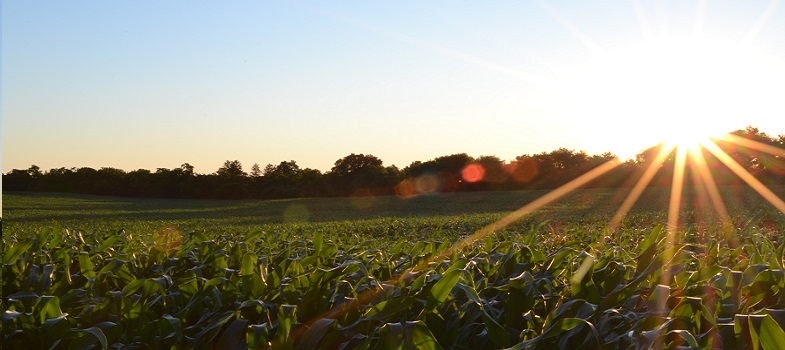Acknowledgements
This free course was written by Andy Lane, The Open University, United Kingdom.
Except for third party materials and otherwise stated (see terms and conditions [Tip: hold Ctrl and click a link to open it in a new tab. (Hide tip)] ), this content is made available under a Creative Commons Attribution-NonCommercial-ShareAlike 4.0 Licence.
The material acknowledged below is Proprietary and used under licence (not subject to Creative Commons Licence). Grateful acknowledgement is made to the following sources for permission to reproduce material in this free course:
353760: Course Image: Photo by Jake Gard on Unsplash
324117: Session 1 Living Labs: People inspecting crop field trials: AgriLink Living Lab Trainers’ Handbook. This file is licensed under the Creative Commons Attribution-Noncommercial-ShareAlike Licence http://creativecommons.org/licenses/by-nc-sa/3.0/
327132: Summary of Session 1: Living Lab members in a workshop: Chris Blackmore
324121: Session 2 The nature of innovative agricultural advisory services: Group of farmers and advisors talking in a field: © Agrilink. https://www.agrilink2020.eu/
354136: Figure 2.1a Actors involved in a contemporary AKIS: EU SCAR (2012) Agricultural knowledge and innovation systems in transition – a reflection paper, Brussels. Available at: http://ec.europa.eu/research/agriculture/scar/pdf/akis_web.pdf
354138: Figure 2.1b Example of a national AKIS for Italy; Figure 2.1c Figure 2.1b Example of a national AKIS for Greece: PRO AKIS (2012-2015) ‘Prospects for Farmers’ Support: Advisory Services in European AKIS’, https://proakis.hutton.ac.uk/sites/proakis.hutton.ac.uk/files/PROAKIS_findings%20brochure_online.pdf
327135: Summary of Session 2: Group of people on a field visit in Spain: Chris Blackmore
324125: Session 3 The AgriLink approach to Living Labs: Group of people talking and recording conversation on large paper: Emils Kilis
327140: Summary of Session 3: Group of people on a field visit with agricultural advisors in Spain: Melanie von Raaij
324139: Session 4 The multi method approach: applying design thinking and systems thinking: AgriLink paper-based forms being filled in: © Agrilink. https://www.agrilink2020.eu/
327490: Figure 4.1 and 4.2 Example of design thinking stages: Adapted from Interaction Design Foundation. www.interaction-design.org
353888: Figure 4.3 The five steps of design thinking: Bootcamp Bootleg D.School. (2010) Modes of design thinking. D.School, University of Stanford. Available at: https://dschool.stanford.edu/ s/ METHODCARDS-v3-slim.pdf
327143: Figure 4.4 Two examples of systems maps : Andy Lane
327195: Summary of Session 4: Group at a table drawing and discussing a diagram they are producing on large paper : Chris Blackmore
324164: Session 5 The facilitation of Living Labs: Living Lab facilitators and monitors at an AgriLink workshop: Chris Blackmore
324176: Session 5 The facilitation of Living Labs: Living Lab members creating a conversation map: Chris Blackmore
327196: Summary of Session 5: Group of five people sat at a table sharing and discussing ideas: Chris Blackmore
324184: Session 6 The monitoring and evaluation of Living Labs: Discussion group at a preliminary stage of an AgriLink Living Lab: Egil Petter Stræte
324202: Figure 6.2: © The Open University
327201: Figure 6.3: Chris Blackmore
324204: Session 7 Living with a Living Lab: some dos and don’ts: Meeting being held in a barn with farmers: © Agrilink. https://www.agrilink2020.eu/
327203: Summary of Session 7: Presentation being given to Living Lab stakeholders in a room in Norway: Egil Petter Stræte
324208: Session 8 Next steps in planning for a Living Lab: People sitting at table with one writing on large piece of paper: Egil Petter Stræte
327205: Summary of Session 8: Large group sat in a circle sharing experiences about agricultural advisory services: Alina Alexa
Every effort has been made to contact copyright owners. If any have been inadvertently overlooked, the publishers will be pleased to make the necessary arrangements at the first opportunity.
Don't miss out
If reading this text has inspired you to learn more, you may be interested in joining the millions of people who discover our free learning resources and qualifications by visiting The Open University – www.open.edu/ openlearn/ free-courses.
Glossary
